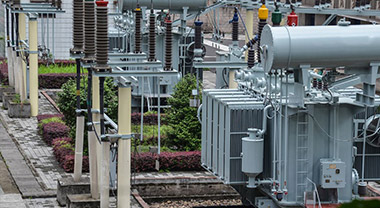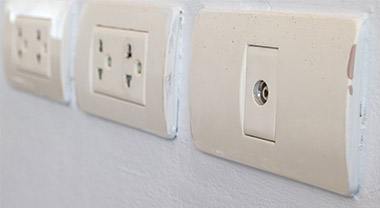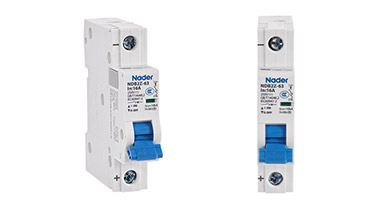Why can't the circuit breaker wire be reversed?
The direction of incoming and outgoing wires of low-voltage circuit breakers cannot be reversed because the operating mechanism on the moving contact side and the static contact side of the circuit breaker has different dielectric properties, and the arc roots on the moving and static terminals of the circuit breaker move in different ways. If the lower inlet line is used, the circuit breaker may need to take measures to reduce the capacity, that is, the actual operating current will be less than the rated current, unless the circuit breaker has the same protection function for the N line as the phase line, and the setting value is also consistent, otherwise the phase line It is not recommended to swap with the N line.
Let us first look at the schematic diagram of the upper and lower incoming lines of the low-voltage circuit breaker:
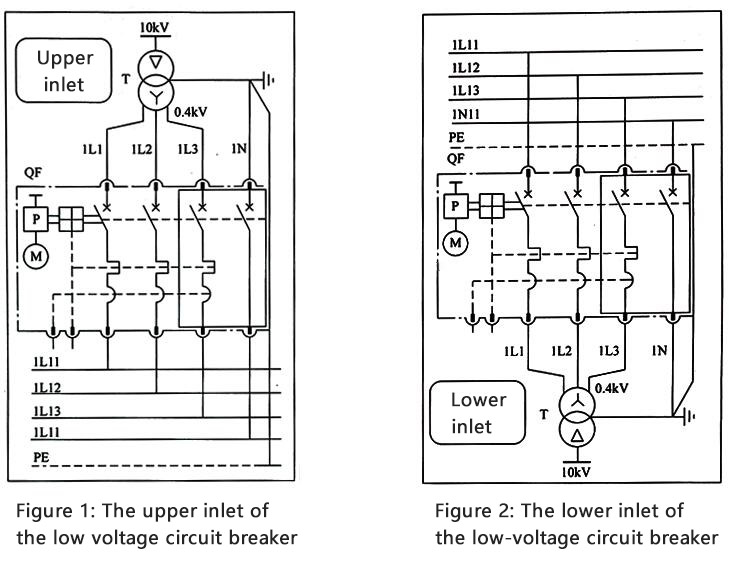
The area within the dashed box in Figure 1 and Figure 2 is the circuit breaker body. Pay attention to the circuit breaker, we find that it is four-pole. In the dashed frame of QF, there are three phase wires with semi-circular short-circuit protection icons and semi-rectangular overload protection icons, indicating that this circuit breaker has overload protection and short-circuit protection functions.
In Figures 1 and 2, there is no protection in the pole where the N line is located. The circuit breaker here at best has the function of an isolating switch, so the wiring of this circuit breaker belongs to the 3P+N type.
Please note two things:
①It is recommended to enter the line from top to bottom, that is, take the upper line approach. If the lower inlet is used, the circuit breaker may need to take measures to reduce the capacity, that is, the actual operating current will be less than the rated current.
②Unless the circuit breaker has the same protection function for the N line as the phase line, and the setting value is also the same, it is not recommended to swap the phase line with the N line.
Let's take a look at why the line direction of low-voltage circuit breakers is best to go from top to bottom instead of from bottom to top?
There are two reasons for this problem:
①The dielectric properties of the operating mechanism on the moving contact side and the static contact side of the circuit breaker are different
Let's look at Figure 3. Figure 3 is a physical diagram of the miniature circuit breaker. Its upper side is the incoming end, and the lower side is the outgoing end. We can see from the figure that the mechanical complexity of the outlet end exceeds that of the inlet end.
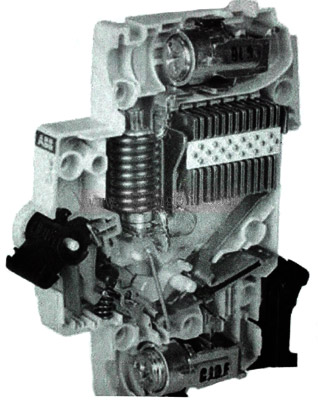
Figure 3 The physical diagram of ABB's S200 low-voltage miniature circuit breaker MCB
The incoming side is the static contact of the circuit breaker, and the outgoing side is the moving contact of the circuit breaker. The structure of the static contact is relatively simple, and the heat dissipation conditions are better, so the dielectric performance, that is, the insulation performance of the static contact side, is better than that of the moving contact side.
The dielectric properties of circuit breaker insulation materials are related to temperature rise. The higher the current, the higher the temperature rise of the electrical appliance, and the relatively lower dielectric performance.
Therefore, when the circuit breaker enters the line in the reverse direction, it needs to be derated appropriately. The operating current after derating is generally 75% of the rated current. For example, the rated current of the circuit breaker is 100A, and its operating current is 75A after the line is reversed. For better quality circuit breakers, there is no need to derate. This will be explained in the circuit breaker's instructions or sample materials.
②The moving mode of the arc root on the movable and static contacts of the circuit breaker is different
For the contacts of low-voltage electrical appliances, once an arc is generated, the part of the arc close to the electrode is called the arc root. The arc shrinks sharply at the arc root, and a round bright spot is formed on the surface of the electrode. This bright spot is called the arc root spot. www.diangon.com All rights reserved
For the cathode arc root, the cathode spot is where electrons are emitted, and its current density is very large, up to 104A/cm2. Therefore, the electrode material vaporizes rapidly, forming metal vapor into the arc gap, thus forming pits on the surface of the cathode; for the anode arc root, it is the entrance for electrons to enter the anode, the area is larger than the cathode spot, the current density is smaller, and the temperature is higher. High, the electrode material also reaches the boiling point.
When the circuit breaker trips instantaneously, the circuit at this time has polarity, which may be anode or cathode. The specific polarity is determined by the moment of breaking. Let's look at Figure 4 and Figure 5.
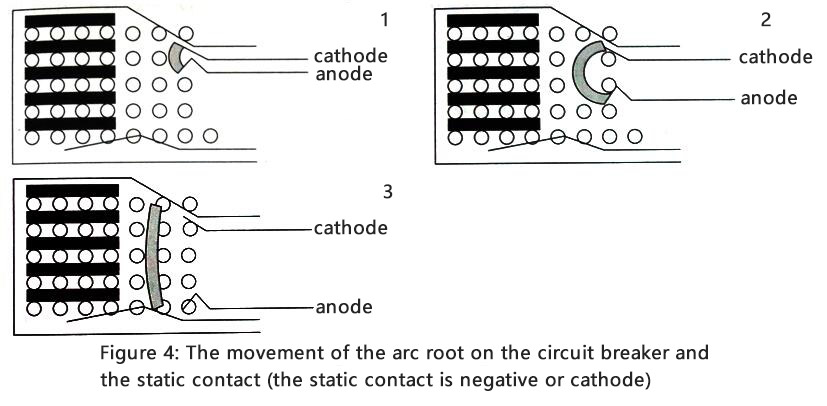
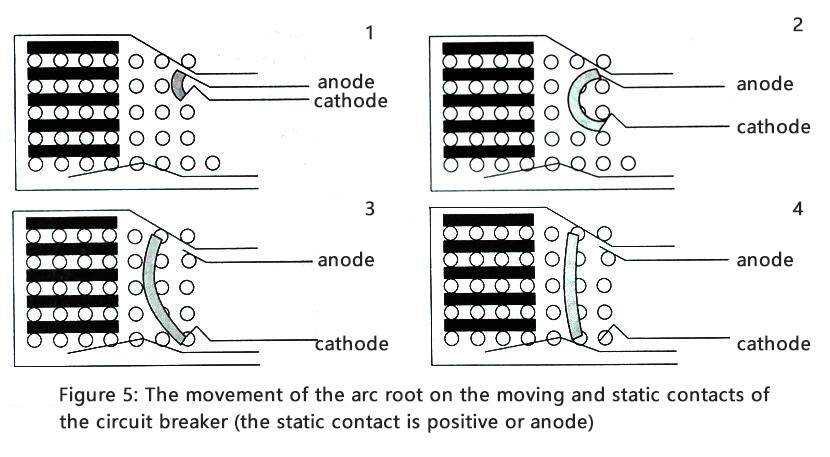
In the contacts of the switching device shown in Figures 4 and 5, the upper part is a static contact, and the lower part is a moving contact. Figure 4 shows that the static contact is negative or cathode, and Figure 5 shows that the static contact is positive or anode. Let's look at the arc movement.
- Figure 4-1 and Figure 5-1: The moving and static contacts have just been opened, and an arc appears between the contacts;
- Figure 4-2 and Figure 5-2: As the contact gap increases, the arc is also elongated. Under the action of the electric field force, the part bends toward the arc extinguishing chamber;
- Figure 4-3 and Figure 5-3: In Figure 4-3, the arc root has left the contact and moves toward the arc extinguishing chamber;
- in Figure 5-3 we It can be seen that the anode area of the arc has left the contact, while the cathode area is stuck on the moving contact;
- Figure 5-4 After a period of time, the arc cathode area on the moving contact (cathode) has left the contact. And move towards the arc extinguishing chamber.
What's the reason? As mentioned above, when the contacts of the circuit breaker are opened, an arc occurs, and the resistance between the poles continues to increase. The arc forms arc spots on the poles. Due to the burning of the arc, part of the contact material melts and vaporizes, forming a metallic arc. The metallic arc is supported by the ions of the metal vapor. We call it a metallic arc.
The characteristics of the metal phase arc are: the diameter of the metal phase arc is large, and the arc basically does not move; when the arc lengthens as the contact distance increases, the surrounding gas enters the arc under the action of the external magnetic field, making the arc The temperature in the center increases, the current concentrates toward the center, the arc becomes thinner, and the arc changes from a metal phase arc to a gas phase arc. At this time, the arc has the possibility of movement.
We know that low-voltage electrical appliances have arc extinguishing hoods. If the arc enters the arc extinguishing hood, all kinds of corners and steps must be encountered. What effect will these corners and steps have on the movement of the arc?
A very famous scholar named R. Michal. He studied the mechanism of arc root motion and concluded that:
① The root of the anode arc has the ability to jump through barriers. In other words, the anode arc can jump across the step and gap.
②The movement of the cathodic arc root must be continuous, and it can only move along the surface of the barrier.
When the arc encounters a step, the cathodic arc root must climb from below the step to the top of the step before continuing, while the anode arc root directly crosses, so the arc will inevitably incline and stagnate. For a specific circuit breaker, if the lower line is used, the hysteresis of the arc root movement will be more obvious and prominent.
That is to say, if the incoming line of the circuit breaker is upward, and the corresponding contact is a static contact, when the contact is opened, regardless of whether the cathode is in the static contact or the moving contact, the arc can enter the arc extinguishing relatively smoothly room. At the same time, the dielectric performance is also better; conversely, the line entry direction of the circuit breaker is the downward line entry, and the corresponding contact is a moving contact, then the time for the arc to enter the arc extinguishing chamber will be delayed compared with the former, and the dielectric performance Will be slightly worse.
In this way, the upper and lower incoming wires of the circuit breaker are largely related to the manufacturing technology of the circuit breaker. For domestic circuit breakers, it is best not to take the lower incoming line. If you must go down the line, you must reduce the capacity. For imported or jointly produced circuit breakers, such as those from Schneider, Siemens and ABB, the capacity of the upper and lower incoming lines is the same, and there is no need to reduce the capacity.


